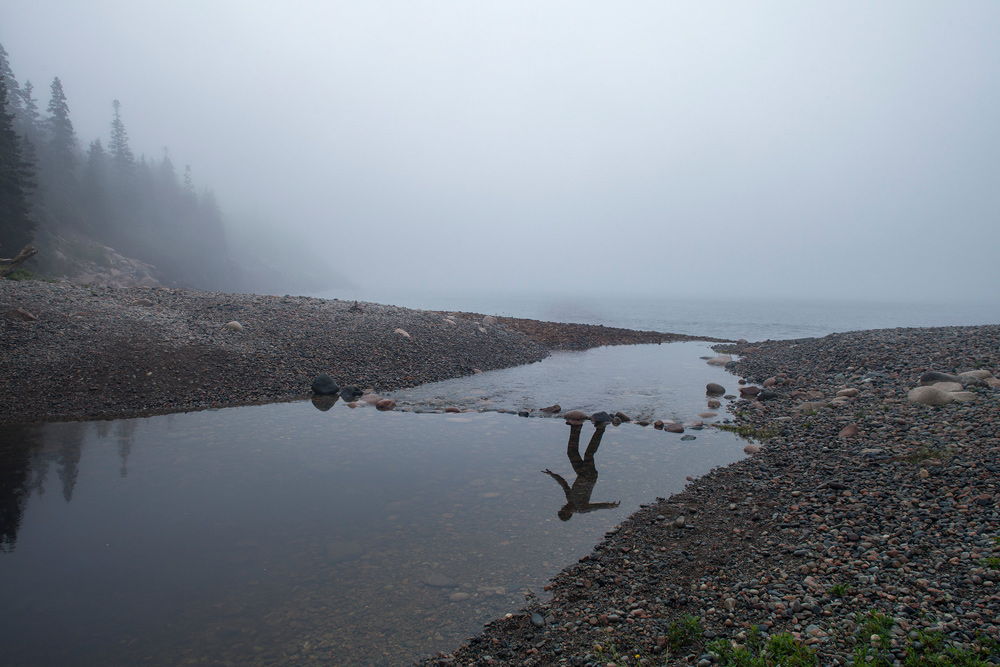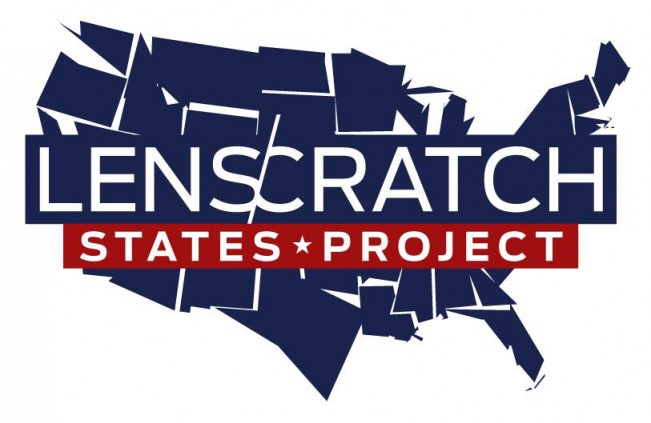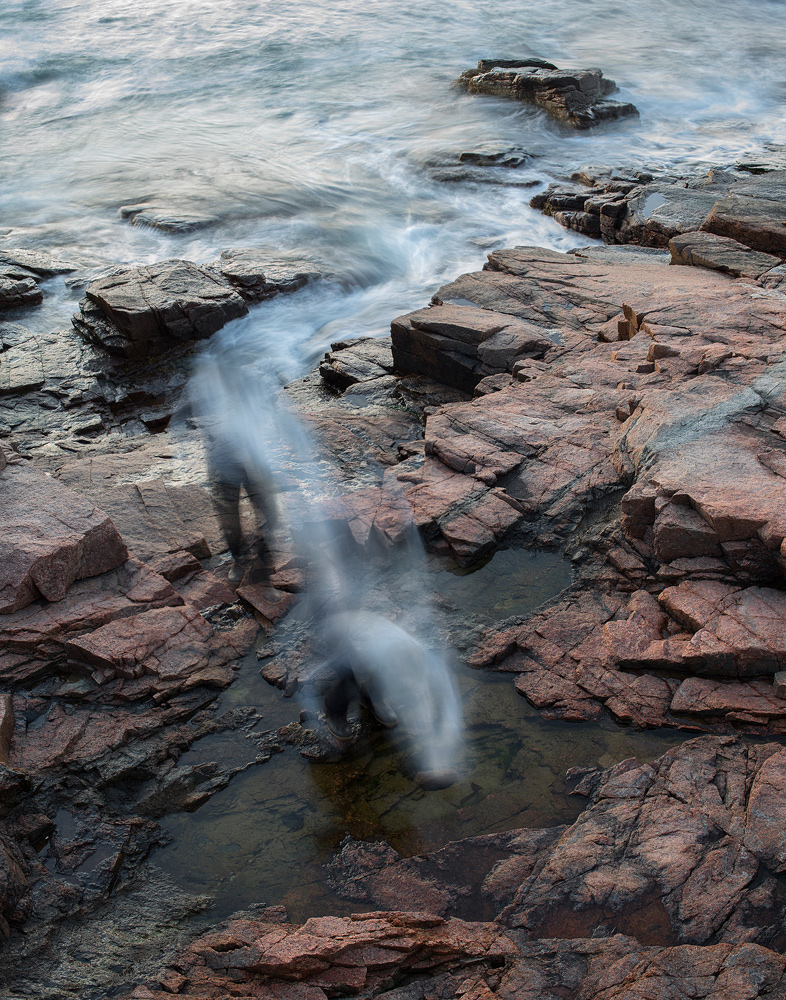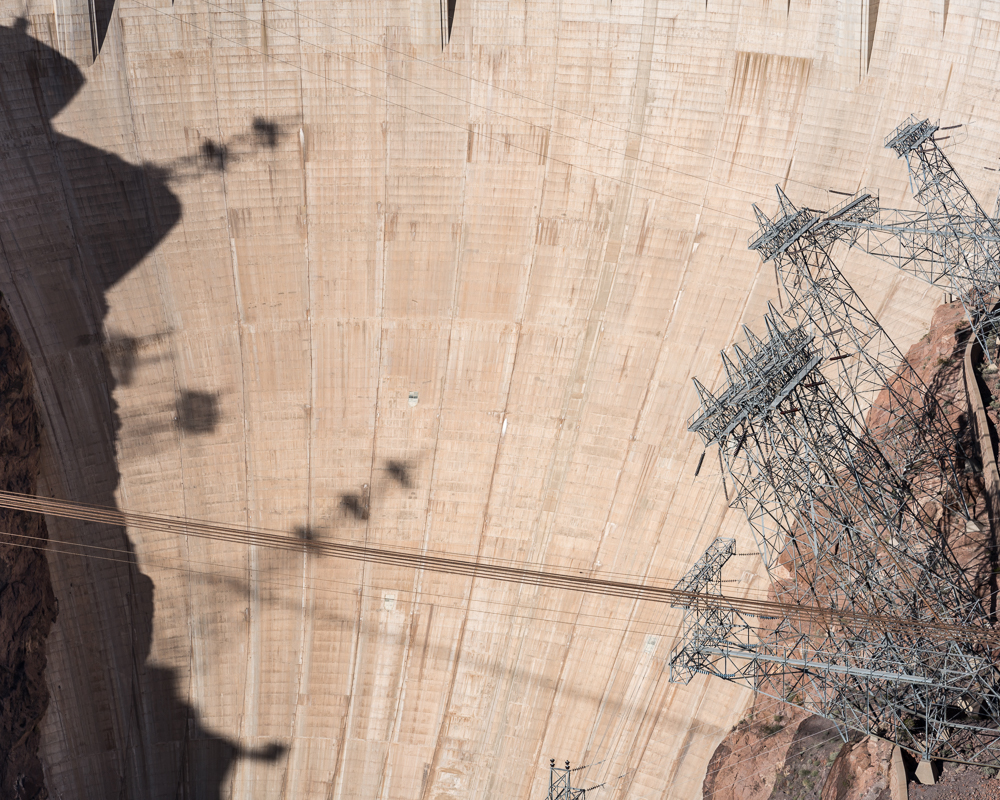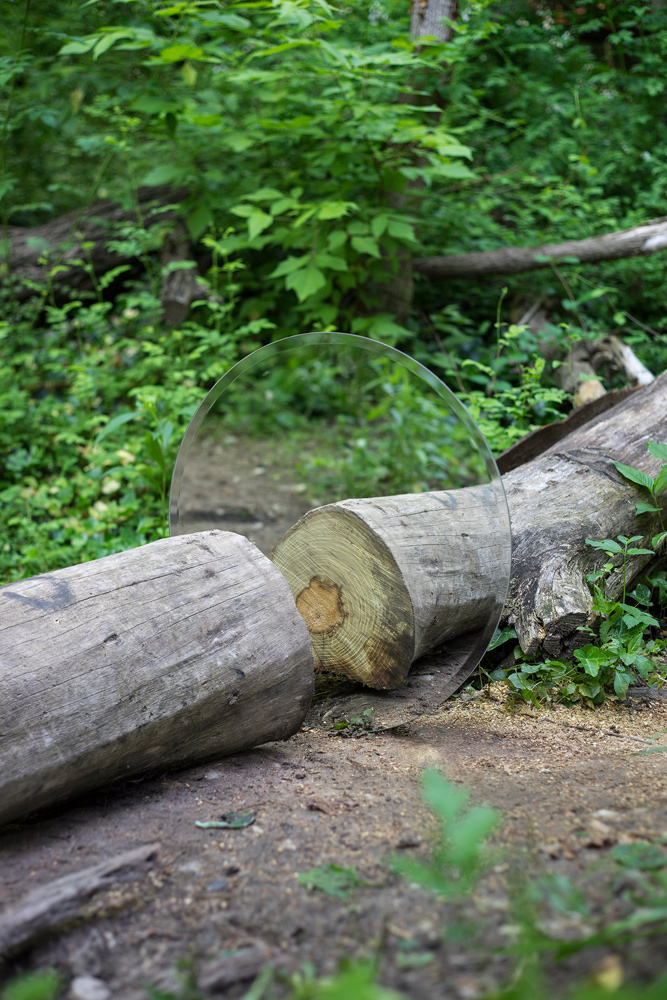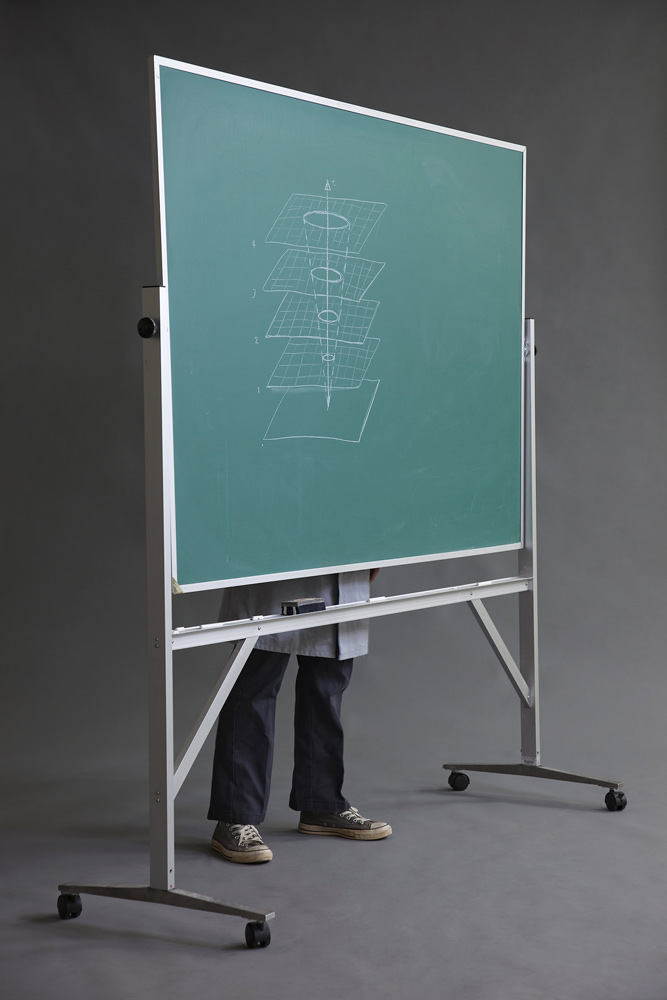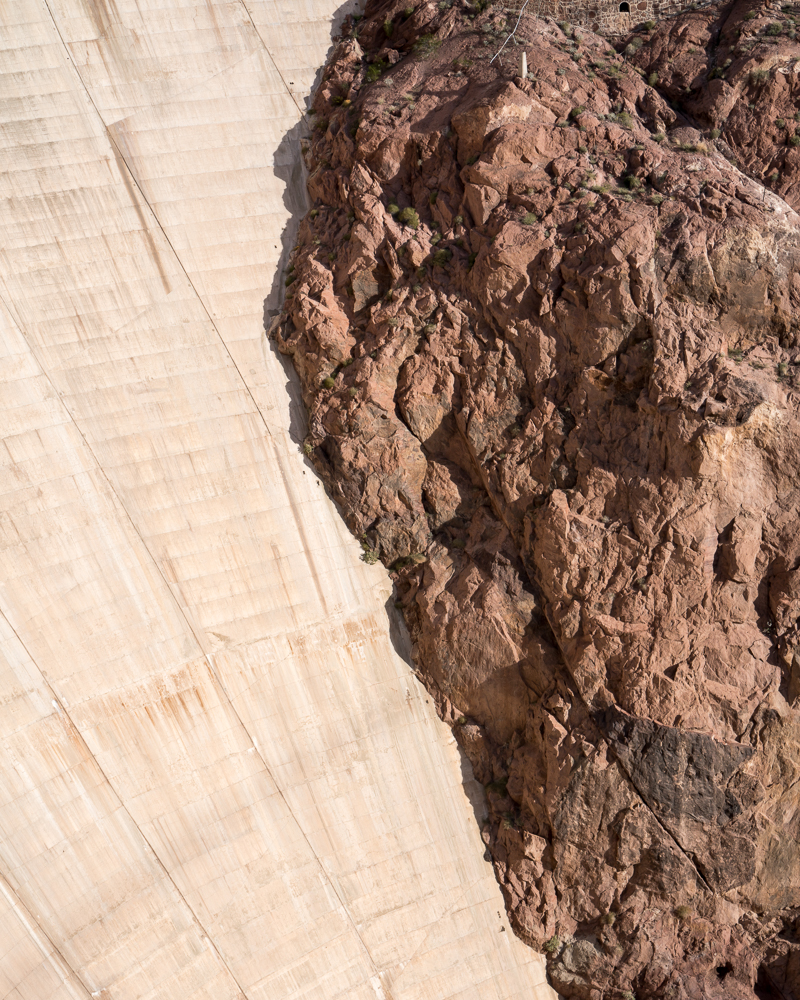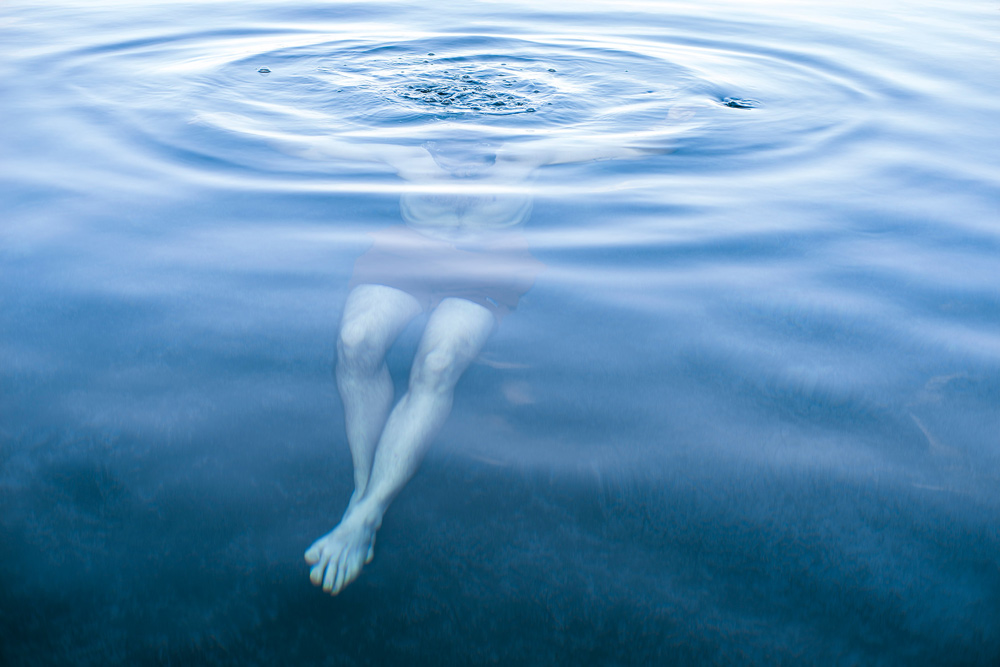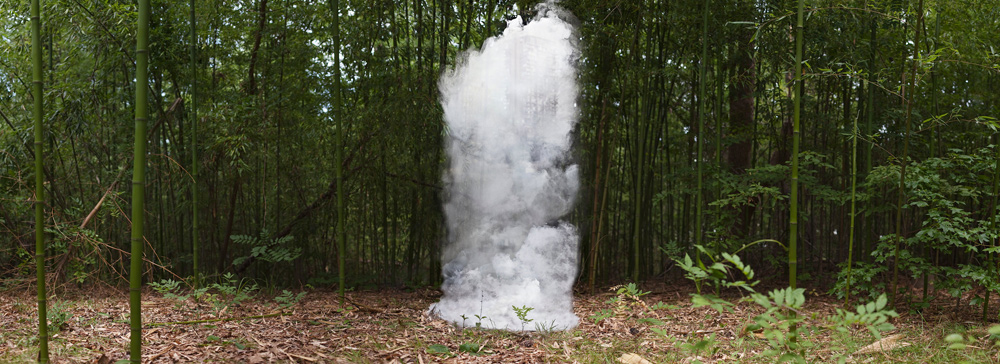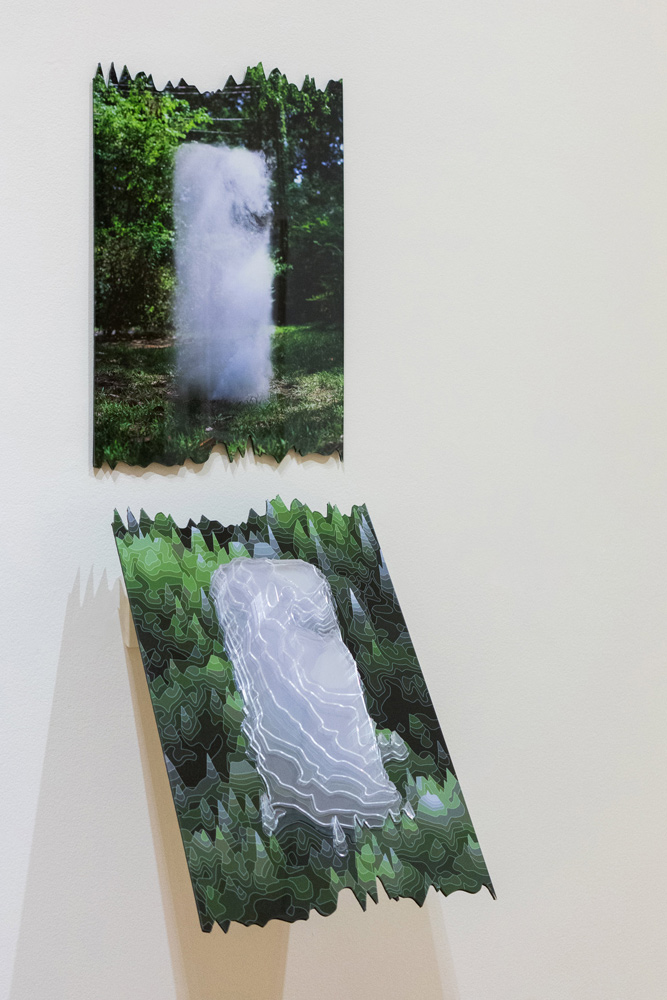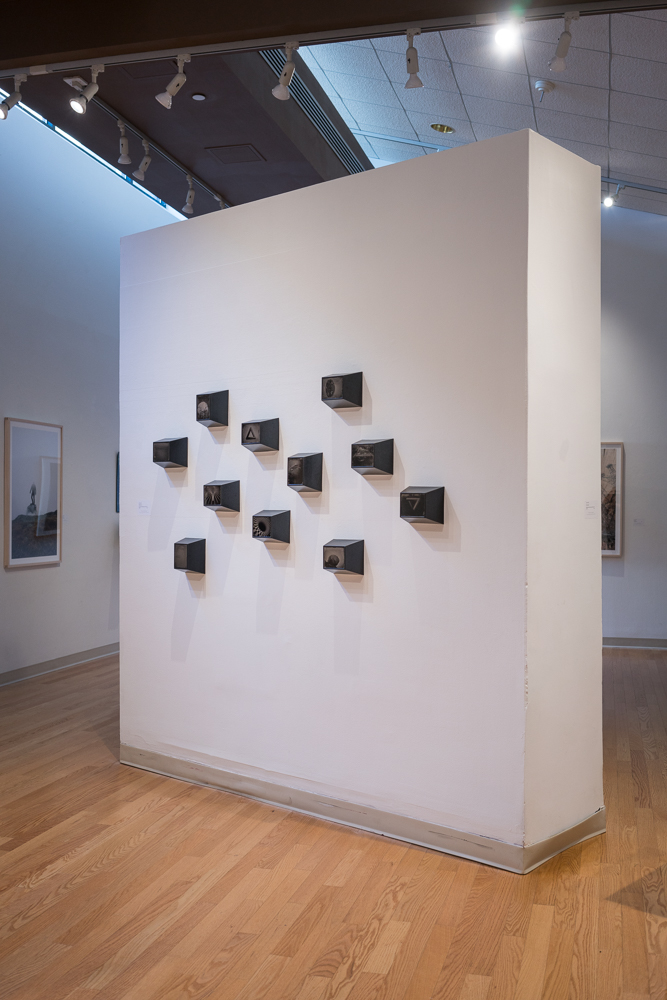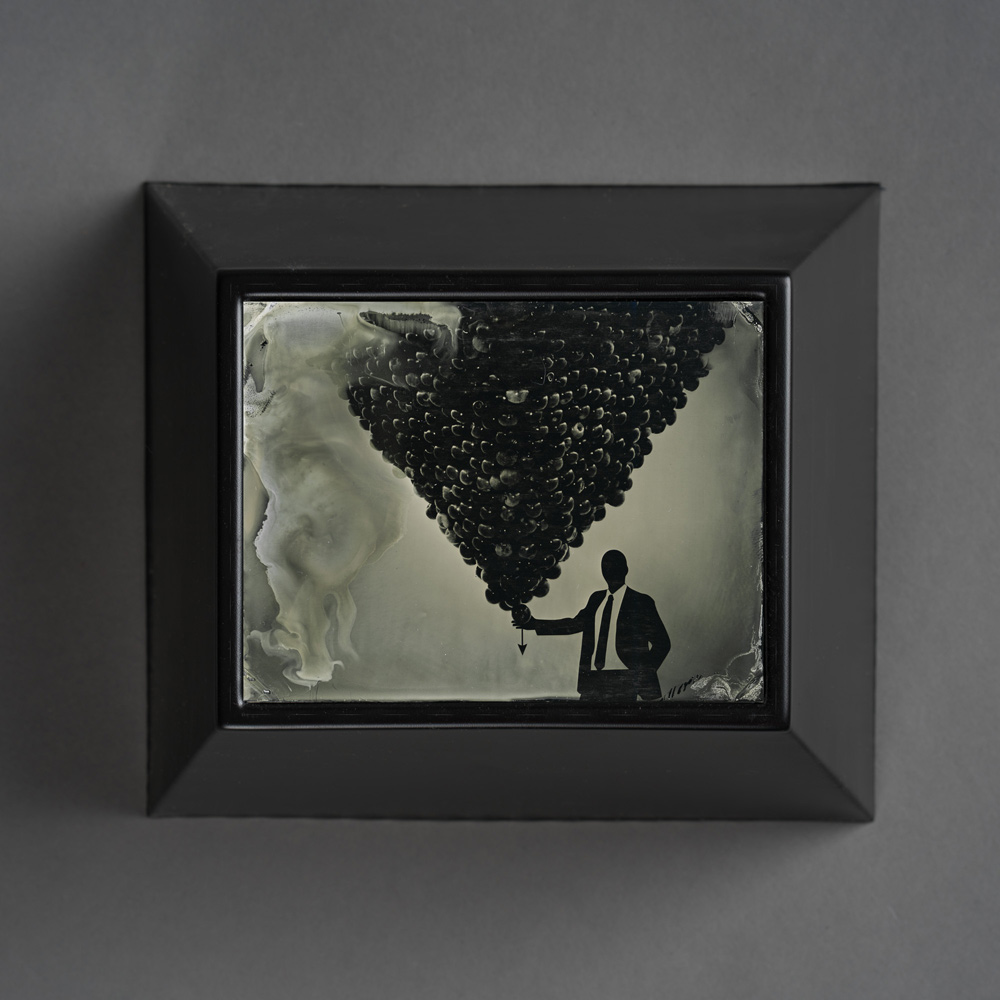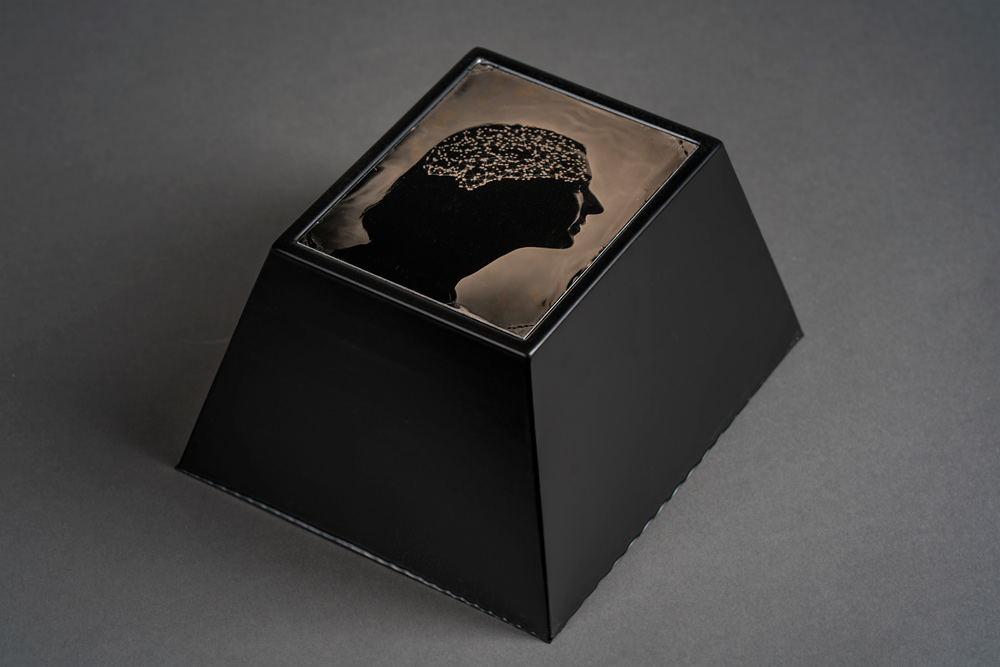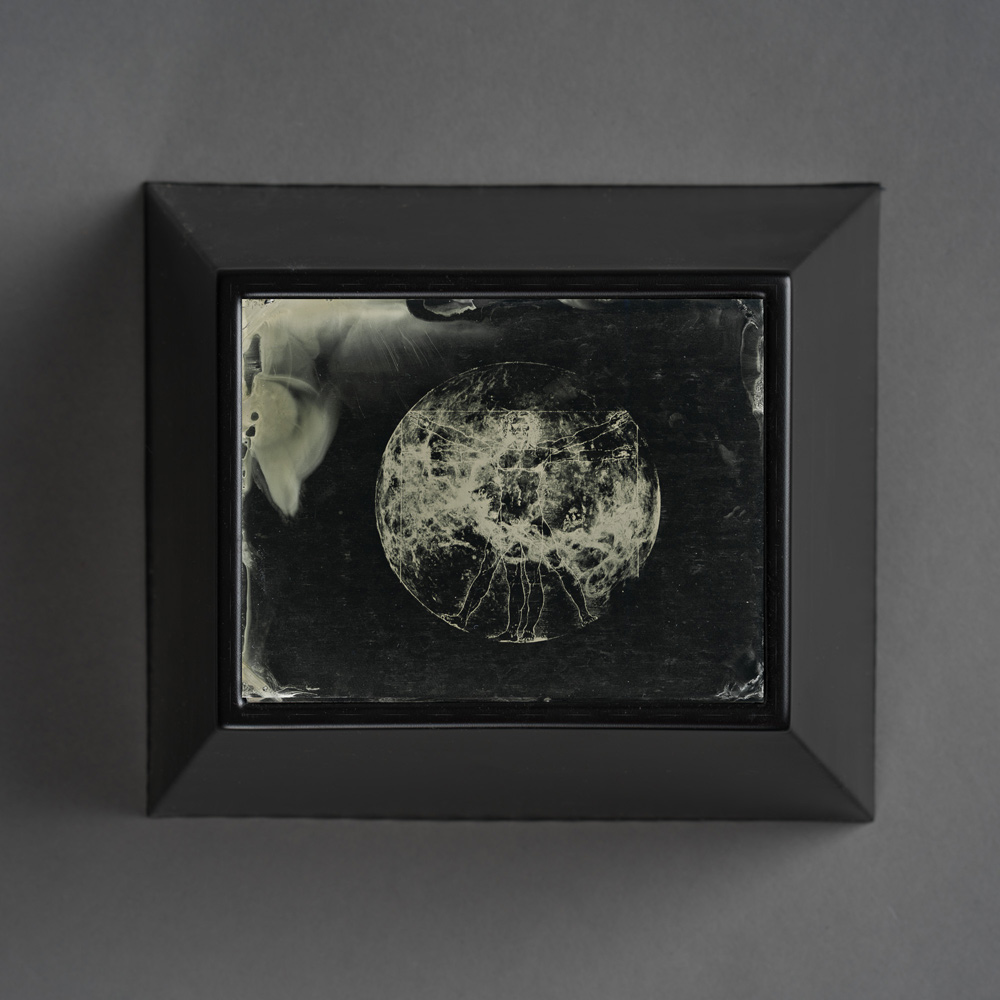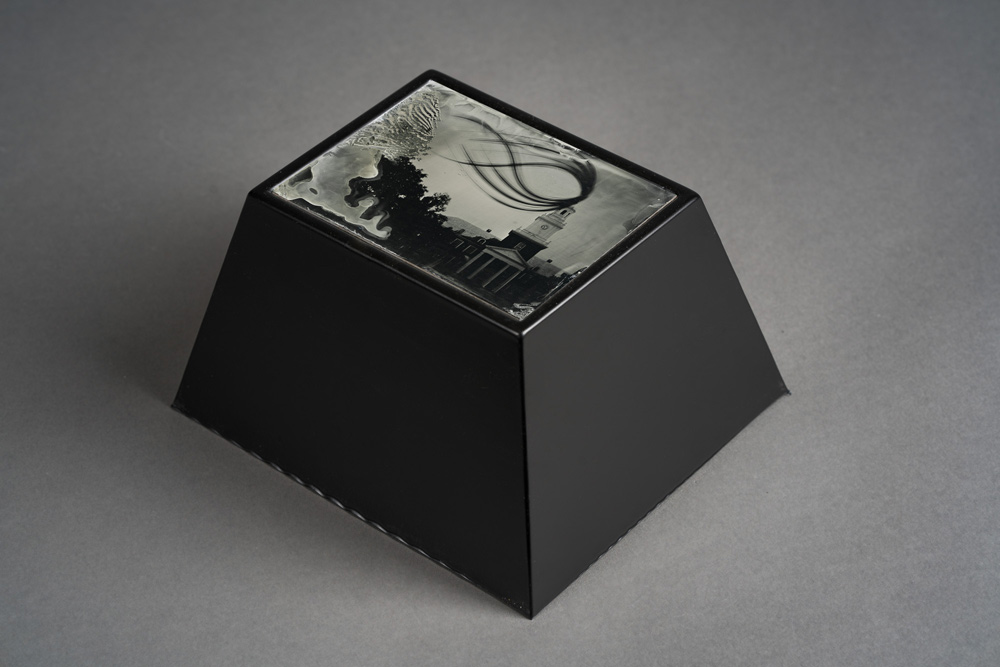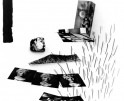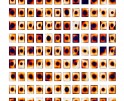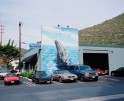Jay Gould: The States Project: Maryland
I have wondered for awhile if Jay Gould’s way of seeing is a result of evolution or perhaps even a biochemical imbalance. Similarly to the small percentage of people that are sensitive to infrared or ultraviolet wavelengths, what is he able to see that the rest of cannot? I am completely fascinated with the constructed narratives in his photographs, as he transforms unworldly, but factual, ideas into spectacles. As a result, Jay’s work challenges a viewer to see as he does—in both science and fringe concepts.
Jay will be taking over Lenscratch as our guest editor for The States Project, this week featuring Maryland-based photographers. As always, today is about our guest, and we have two great bodies of work to share. Jay and I were able to talk about his experiences living in Maryland thus far, and I was also able to pick his mind about his exciting residency at the Johns Hopkins University Extreme Materials Institute.
Jay Gould (b.1982 Minneapolis, MN) is an artist, a member of the faculty at the Maryland Institute College of Art (MICA) and Artist in Residence at the Johns Hopkins University Extreme Materials Institute. Gould received his B.F.A. from the University of Wisconsin and his M.F.A. in photography from the Savannah College of Art & Design. His work, which integrates scientific topics into installation and constructed photographic projects, has won numerous national awards, such as the Berenice Abbott Prize for an emerging photographer, the Jeannie Pierce Award, the Magenta Foundation’s Flash Forward Festival, and First Place at the Newspace Center for Photography’s International Juried Exhibition. Gould’s work is widely exhibited around the country, making solo and group appearances at the Fridman Gallery in NYC, the University of Notre Dame, The Julia Dean Gallery in Los Angeles, the Fort Collins Museum of Contemporary Art, the Urban Institute for Contemporary Arts in Grand Rapids, Michigan, the Griffin Museum of Photography, the Center for Maine Contemporary Art, and the John Michael Kohler Arts Center. His work has been featured in publications by Conveyor, Ain’t Bad and Mental Floss.
Uncertain Passages
“Don’t get too near that leak. You wouldn’t want to wind up in the other universe, would you?”
Kurt Vonnegut’s repeating character Kilgore Trout took to calling mirrors “leaks,” as he believed they were a connection to another universe. While to many this might seem like typical Vonnegut absurdity, to me it has always been a reminder of the way our imaginations can run wild when presented with curiosities, and the possibility of parallel universes is one of the most provocative curiosities of all. The topic has long been a possible solution for unexplained phenomena, including déjà vu, religion, and even physics. While I have been thinking of the possibility of other worlds since I was a child, the recent prominence of the “multiverse” in modern physics is what has lead me to my current fixation with the topic and serves as the backbone of Uncertain Passages, my recent body of images and physical constructions.
The Uncertain Passages series explores and meditates on the unobservable reality that theoretically underpins our existence. The photographs seek to balance the exhaustion of attempting to photograph an idea that may prove not to exist with the poetic license that comes from working with currently unknowable paradoxes. I have wandered the world building and finding symbolic doorways that pass through time, space, matter and other curious phenomena so that I might embrace the unknown and welcome viewers to engage with the complex sense of wonder that defines our species. When answers are evasive, as they often are in modern science, we hold to this wonder and accept the words of Albert Einstein, “Imagination is more important than knowledge.”
Paint us a picture of what it is like being a Maryland-based photographer.
While I don’t feel like I’ve lived here long enough to comfortably grasp the nuance of the state, I can certainly express some of the unique qualities about Maryland that fascinate me as an artist resident and have helped me love where I live. As a native midwesterner, the variety of culture, landscape and climate packed into such a small distance is still a shock. All within the span of a few hundred miles I can be hiking through Appalachia, lounging on an ocean beach, canoeing beautiful estuaries, or enjoying the offerings right in the middle of several amazing cities. As a photographer who enjoys a bit of wandering and exploring, I don’t believe that I’ll ever have the feeling that I’ve seen all that this area has to offer. It’s partly this variety that makes it so difficult to wrap my head around how to sum up this place. I feel like the absurd physical shape of the state is the best analogy I have to try to explain its character. Maryland spreads across the region, its Western side hugging West Virginia and Virginia, creating a transition that imparts a Southern charm to mix with its Northern seaport roots. I look at the state flag and see a place that is proud of its eccentricity and bright, confounding identity. Baltimore, my home, is a place I consider the New Orleans of the East Coast. Proud of its bold, creative character, and striving to be honest about its flaws. The art scene certainly reflects that personality. A quick visit to the American Visionary Art Museum, the Baltimore Museum of Art and the Station North Arts District will demonstrate only a small slice of how much amazing art can happen in just a five mile span. It is a culture that connects the mid-Atlantic by inviting artistic experimentation through community connections. In Maryland, art is a facilitator towards deeper conversations, new means of thinking and is a prominent force throughout the state. It’s hard not to be excited about a place like that.
Looks like you have been all over the place. Can you talk about how you ended up in Maryland?
The very abbreviated conclusion of the long story is that I came to Maryland to work at the Maryland Institute College of Art, aka MICA. It’s the sixth state I’ve lived in during a ten year period, and I was really looking for a location that I could put down some deeper roots to make a home and push my career. Just prior to Maryland I was living in Louisiana and teaching at Louisiana Tech University. I love my friends there and am grateful to have experienced several parts of the deep South, but the Minnesotan in me just couldn’t quite ever see that part of the country as home. Garrison Keillor would probably explain that it was just my blood was thinning out from the heat and therefore not providing the correct oxygen level to the emotional centers of my brain. I looked towards Baltimore as a vibrant community with an unusual art scene and great proximity to all the East Coast resources, and a tad less heat. I’m quite happy with the decision!
Maybe this sits in a similar scope to living in various different regions–with Uncertain Passages facilitating your fascinations with unobservable reality, what about the unseen excites you?
I think that my fascination with the unseen stems from a fundamental fear of the unexplainable. Growing up I was insistent that actually seeing something was necessary in order to believe it. Everything seemed far fetched unless I could witness it, so I would pester my parents with questions until they finally broke down and decided to just show me the truth of the situation, even if it may not have been age appropriate. My dad was a physician, so a lot of my initial disbelief revolved around medical things like the age old “where do babies come from.” Seeing a freshly born baby was a good tactic to shutting me up. Bit by bit, I not only accepted that many things could be explained without being seen, learning deep respect for the order and elegance of this unseen reality that exists just beyond our natural senses. However, it was always the paradoxes that exist in that space where answers couldn’t yet be resolved that truly twisted my brain. Again, as a child I would write strange stories about my questions in order to come to terms with them, and I think that is exactly what I am still doing now, nearly thirty years later. When I began studying modern physics in college I found a framework that perfectly matched the curiosity that had concerned my imagination for years, along with a new respect for visual art’s ability to share imagined experiences. Oddly enough, photography is the perfect medium for my work because it is the worst at dealing with the unobservable, and therefore exaggerates my frustration and conflict with the topics. I cannot photograph unobservable physics, I will never get to see a wormhole, for example, yet the classic visual medium of perceived objective truth is there to create my illusions and the suspense of disbelief that really pulls my strange story together.
With a practice so rooted in concepts of science and theory, there isn’t a real need for location to be a factor of the work. Still, have you found the East Coast having an effect on your work?
It is definitely nice to have a lot of work that is not location specific, but I do find the East Coast to be quite advantageous towards pushing my career in new directions as an artist and an educator. The amount of research and science happening within a short drive still blows my mind. I’ve hopped in the car on a whim to watch a huge rocket launch from Wallops Island and a day later been out photographing the oldest amateur model rocketry group in the country. I’ve sat at the neighborhood bar next to a NASA engineer that works on the James Webb space telescope at Goddard Space Flight Center and then saw him unexpectedly speak on stage in DC a week later. And then I see art and artists everywhere, finding ways to integrate their practice and ideas into whichever communities they see a need and that strikes their interests. Whether I’m seeing the public murals being painted by kids or some unusual neighborhood festivals with kinetic sculpture competitions, I get a general sense that art and action is what binds people together here and it motivates me to work on projects that are integrated with others in some way.
Can you talk about your residency at Johns Hopkins University Extreme Materials Institute?
Absolutely! I have been incredibly fortunate to spend better part of the last year as an artistic nuisance to this lab of very gifted researchers. Thankfully they never once treated me like I was a pest, but rather as a peer and a welcome addition to all sorts of meetings that were way above my pay grade. My general proposal to labs like this is to come in and learn about what they do, and create a variety of projects that will interpret their research and the personality of the lab into stories, analogies and works of art that can share their ideas and motivations with a completely different audience. I think that each lab has a personality beneath it, something utterly human that will allow an artist like me to build around. HEMI, as this institute is called, performs a huge range of projects that all revolve around the idea of the close observation of controlled destruction in order to learn how to better defend and protect humanity. I worked with labs that are looking at brain impact to learn how to protect from concussions, labs crushing magnesium at 7-million frames a second to learn how to build resistant structures at an atomic level, and labs that fracture and image meteorite samples to prepare for an actual multinational asteroid redirection mission. Seriously, like preventing extinction level stuff here! What I found was that there was no one set of analogies that would unify a complex institute like this, so I have essentially created a project for each lab. A first-person narrative about fear that deals with the asteroid missions. Studio still life analogies for the brain studies, a 90-foot long accordion book to discuss the absurdity of time sliced down to 7-million frames in a second, and a large set of tintype sculptures that interpret the drawing and quotes that I collected in my sketchbooks during the last year. I feel like a magpie, chasing all the shiny concepts and hoarding too many ideas, but each lab seems to be pleased with the results and thankfully on-board with the humor and ridiculousness that I use to describe their serious work. I’ve spent my time building trust, and they know that I am not doing science, that my work isn’t meant to better explain. Rather that it invites curiosity and helps them develop new means to think about their own work.
Are you currently working on any Maryland-based projects?
Now that I’m wrapping up my work with the Hopkins Extreme Materials Institute, I’m planning to follow up on some of the tangential connections I’ve made through the residency to push a few new projects. One involving time, which I hope will become a more scientifically connected companion to Uncertain Passages, and the other project will be working with Space as a theme, hopefully with some longer-term NASA connections. Ideally I could also connect some of this to my teaching as well.
On a more geographically connected topic, since I have a bit more open time coming this summer, I’m also planning to continue my long-running documentary project with amateur rocketry. It has always been a really interesting way to learn about the areas in which I’ve lived. My hope for this summer is to connect with two more groups. One is on the Eastern shore, which is a part of Maryland that I am excited to finally spend time exploring.
Finally, describe your perfect day.
Waking up oddly well-rested a few hours before dawn in a hammock on a wooded lake to some freshly brewed coffee and immediately start photographing a mirrored liquid landscape without any preconceived goals other than to explore with wide-eyed readiness for unexpected surprise. Afterwards, with a feeling of productivity satisfied, have a peaceful walk with my wife and dog, a long run, some down time with coffee and a sketchbook, and head into the woodshop for a few hours of making sawdust. Finally hope that my dear ancient pickup truck can get us to dinner before capping off the night with board games and beers with our friends.
Lab Collaboration
Scientific research places great importance on being articulate, to make their findings clear, distinct, and precise in relation to other parts. Clear, distinct, precise; as an artist and especially a photographer who works with themes of science, these are words that come up frequently as concerns and expectations during my collaborations with laboratories. While I certainly appreciate and understand the value of these terms in regards to a study, I have always wondered if they are the best words to seek when we truly want to appreciate the topic of science, or is there something fundamentally interesting in its mystery? We are continuously asked by science to suspend our disbelief, to picture scenarios that defy common sense and as a result, many of us look to science in a similar way that we seek art, not for cold calculation, but instead for a story, something to challenge us, and a new mystery for our minds to unravel.
When working with researchers I look at the mechanisms of investigation and insight, eventually building work that shares the experience and stories through the personalities and humanity of the researchers themselves. I seek to share the process of interdisciplinary discovery with my audience through the combination of visual mediums of art . Together, art and science build amazing stories that can identify new terrains, share a profound sense of wonder, stress urgent warnings and remind us of the complex scope of human connection through imaginative cooperation.
In my most recent collaboration with the Hopkins Extreme Materials Institute (HEMI) at Johns Hopkins University, I have created a range of independent projects that attempt to encompass the scope of this vast lab. Subjects range from tiny high-speed stress testing of material at an atomic level on up to asteroid redirection missions taking place millions of miles away.
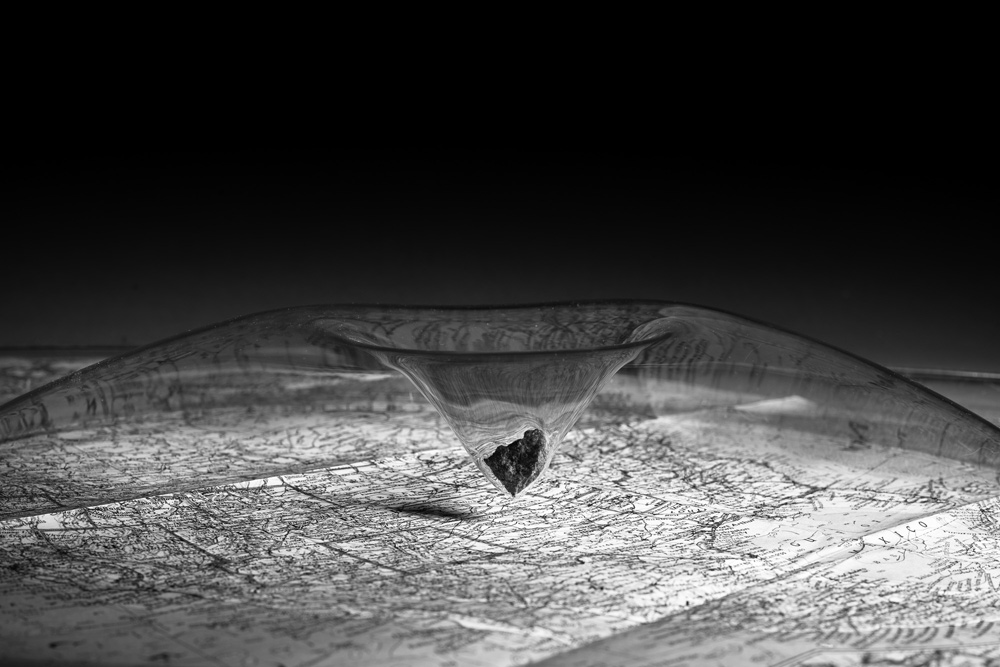
©Jay Gould, Image is part of a series about asteroid redirection research. The images of this series focus on fear of annihilation, the reason for these collaborations between the world’s space researchers.
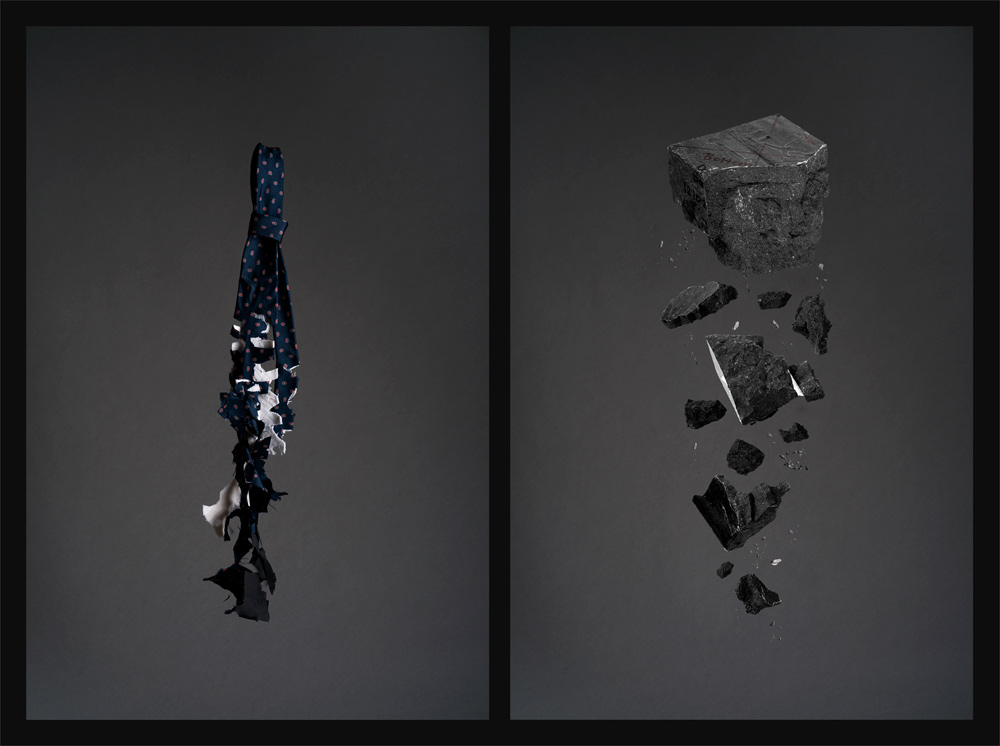
©Jay Gould, This is a portrait of HEMI’s director, KT Ramesh, who epitomizes research tied with ritual and creativity.
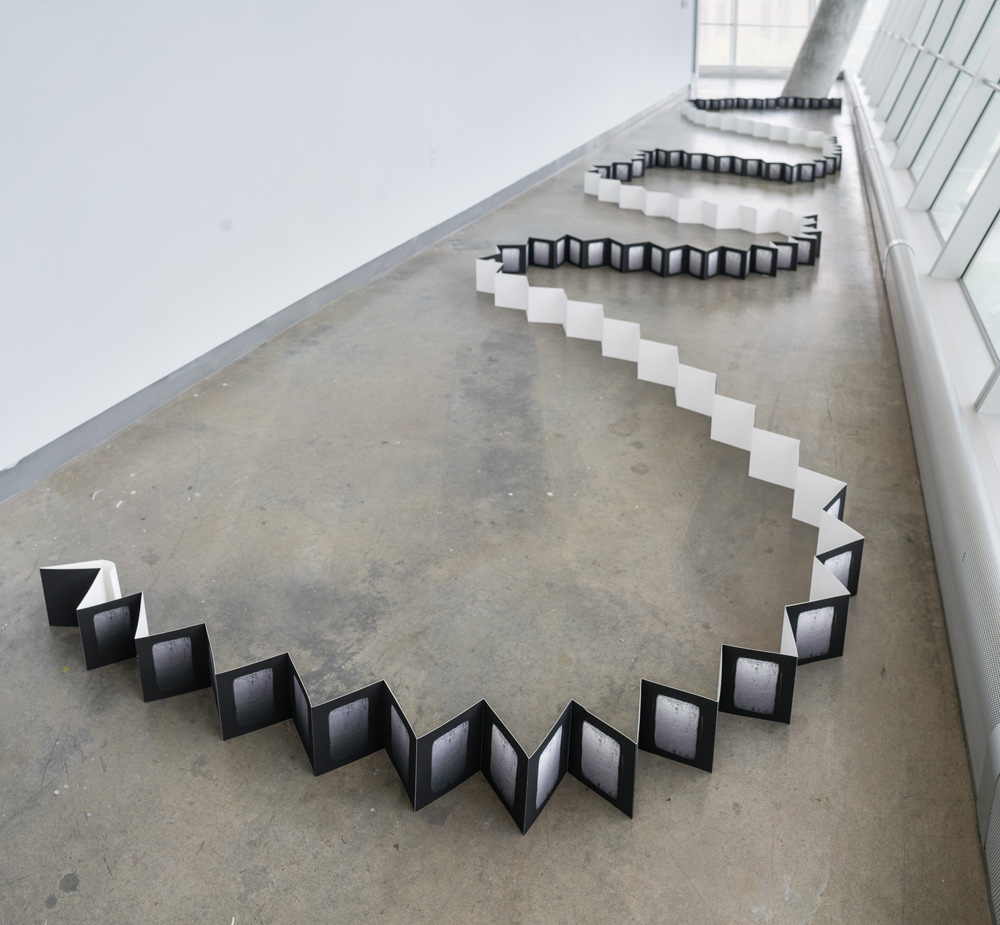
©Jay Gould, 90 foot accordion book that depicts the crushing of magnesium at a very high speed, nearly 7 million frames per second.
Posts on Lenscratch may not be reproduced without the permission of the Lenscratch staff and the photographer.
Recommended
-
Nate Larson: The States Project: MarylandApril 1st, 2017
-
Ginevra Shay: The States Project: MarylandMarch 31st, 2017
-
Tommy Bruce: The States Project: MarylandMarch 30th, 2017
-
Kei Ito: The States Project: MarylandMarch 29th, 2017
-
Matthew Moore: The States Project: MarylandMarch 28th, 2017

